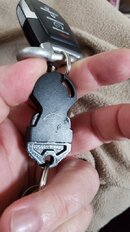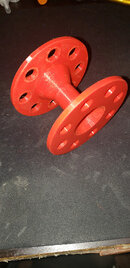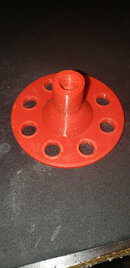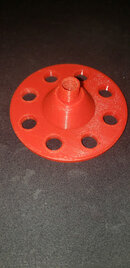Ah, you must stop the print to put on the snap bolt?
I was initial stopping then resuming the print to put it in, but I found I could get a layer right there that didn't bond well if I let it sit too long. When oriented right, I could instead place the bolt snap in as it prints in another area of the design. That method eliminated the poorly bonded layer issue and made me pay attention to it more closely during that period of the print, so that's what I'm currently doing.








